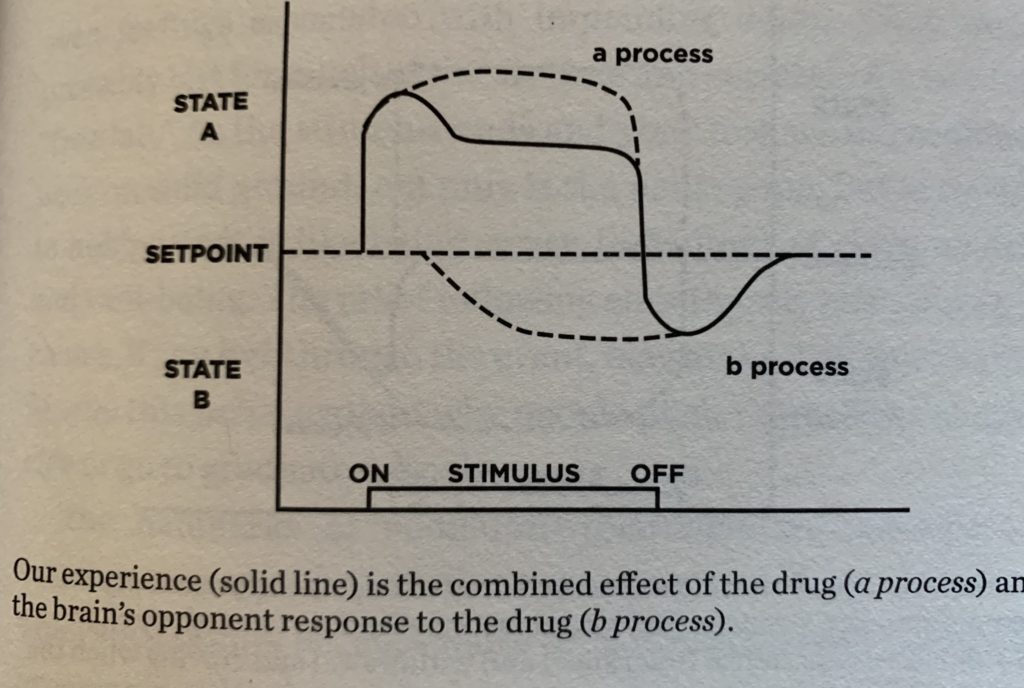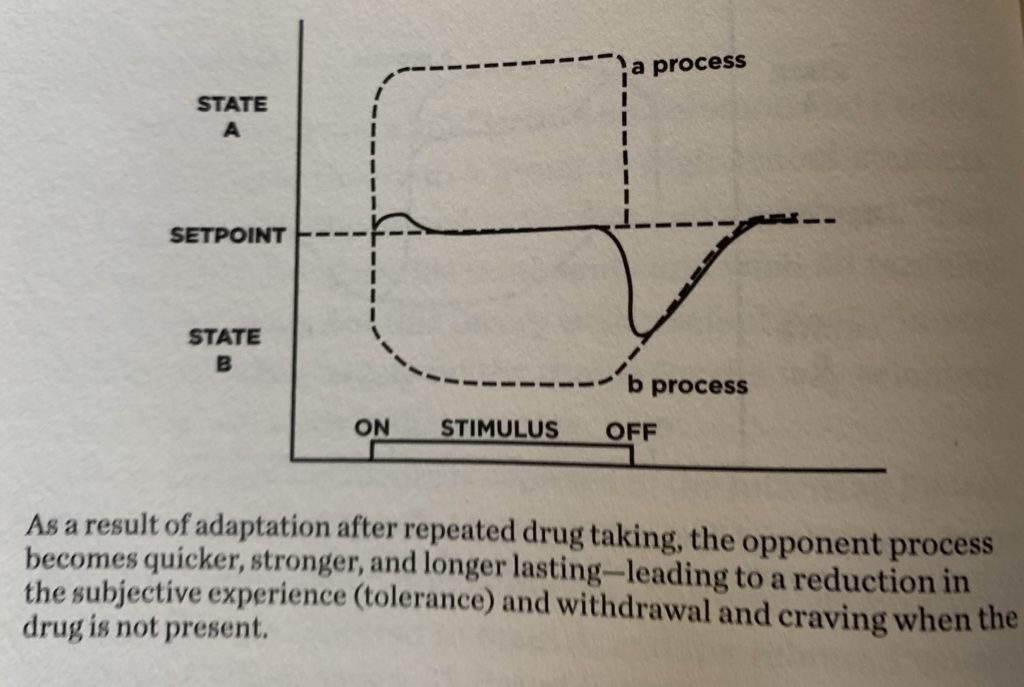on
Verdure
- Get link
- X
- Other Apps
I recently finish a very interesting book on drugs and addiction titled Never Enough: The Neuroscience and Experience of Addiction. The book was written by Judith Grisel, who is a not only a professor and neuroscientist, but also a former drug addict. The book describes the process of addiction, and how different types of illicit drugs affect people. The author provides a nice overview of the science–in layman’s writing–as well as her own experience with each drug.
The most interesting part of the book, however, were these two graphs. The first graph shows the experience of people taking drugs. The ‘a process’ in the dashed line the drug’s impact on the person. The ‘b process’ dashed line is the body’s response aiming to counteract the effect of the drug. The first picture below shows new drug users. These individuals feel a great high due to the ‘a process’ which wears off as the ‘b process’ slowly counteracts the effects. The solid line is the net effect.

However, experience drug users build up a tolerance as shown below. What is most interesting is not that the tolerance is built up–that was well known–but basically, people do not get very high at all. Drug addiction occurs not really because people want to get high–although they do–but mostly because the non-drug state is so poor people want to avoid the horrible feeling when not on drugs. For opioid and heroin users, people call this state being “dopesick” as described in a recent book be with the same name (Dopesick). This means that experienced drug users can take drugs in quantities that would kill a new drug user. It is also why starting drugs is so problematic

The book is fairly concise and an interesting read throughout. However, the one thing that will stick with me going forward are these two figures.
Comments
Post a Comment